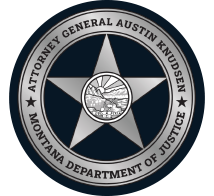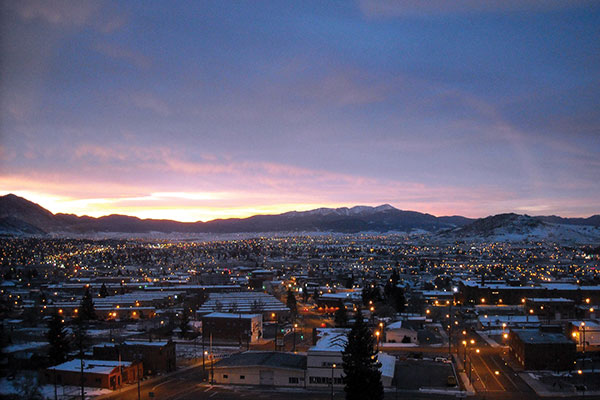The 2008 Montana v. ARCO Consent Decree allocated $28.1 million (M), plus interest, to restore, replace or acquire the equivalent of the injured groundwater and surface water of Butte Area One. The Governor created the Butte Natural Resource Damage Restoration Council (BNRC) to give the citizens of Butte a strong voice on how this fund should be spent. This nine-member volunteer council is assisted by the Montana Natural Resource Damage Program (NRDP).
In 2020, the Butte Priority Soils Operable Unit Consent Decree was entered, which provides $20.5 million for the Montana Department of Environmental Quality to perform the Blacktail Creek cleanup with leftover funds to be transferred for restoration actions and $1 million to Butte-Silver Bow for end land use. DEQ and NRDP agree that the $20.5 million payment from BP-AR is more than the then-estimated cost of the BTC Riparian Actions, and that the $20.5 million settlement amount was intended to provide leftover funds to repay the restoration funds that have paid for the Parrot Tailings Waste Removal Project, as noted in the Trustee’s Modifications to Plan Amendments Based on Public Comment and Approval of Plan Amendments as Modified (September 19, 2019) at
Butte Area One (BAO) Restoration Plan & Amendments:
- BAO Restoration Plan Amendment (2020)
- BAO Restoration Plan Amendment (2019) – Parrot Removal Project Funding.
- BAO Restoration Plan Amendment (2016) – Parrot Tailings Waste Removal.
- BAO Restoration Plan (2013)
- BAO Final Restoration Process Planning Document (2012)
- BAO Restoration Planning Process and Draft Conceptual Restoration Plan (2007)
Related Documents:
- BAO Data Gap Investigations Silver Bow Creek and Blacktail Creek Corridors SAP (2016)
- Tech Memo SBC-BTC Riparian Corridors Data Gap Investigation (2016)
- This technical memorandum presents results of soil, sediment, surface water, groundwater, and pore water sampling pertaining to characterization of mine wastes located at the Blacktail Creek (BTC) Berm area and within the historical floodplain deposits associated with the BTC and Silver Bow Creek (SBC) riparian corridors. These sampling results are being utilized to address data gaps and satisfy design needs for the integration of restoration with remedy of mining and mineral processing wastes in the SBC and BTC corridors and to support integration of restoration design. Field methods and procedures used in this data gap investigation generally followed procedures outlined in the draft final sampling and analysis plan (SAP) and quality assurance project plan (QAPP) (Tetra Tech 2016a).In order to fill data gaps in information concerning the extent and magnitude of Tailings/Impacted Soils (T/IS) and to obtain additional data necessary for integration of restoration with remedy, Tetra Tech conducted a limited soil, surface water and groundwater investigation within the SBC and BTC corridors focused on the following data gaps identified in the Preliminary Conceptual Restoration Plan (PCRP) (Confluence 2015):
- Further define extent and magnitude of T/IS within floodplain soils to assess waste areas and depths;
- Characterize the near-surface aquifer to quantify construction dewatering requirements;
- Evaluate COCs in the in-stream and pond sediments, surface water and the stream banks within the SBC and BTC Corridors to identify potential contaminant loading;
- Collect additional groundwater quality data to define the extent of alluvial impacts and their potential impacts on post-restoration groundwater and surface water quality; and
- Evaluate metals loading from alluvial aquifers to SBC and BTC riparian corridors.”
- This technical memorandum presents results of soil, sediment, surface water, groundwater, and pore water sampling pertaining to characterization of mine wastes located at the Blacktail Creek (BTC) Berm area and within the historical floodplain deposits associated with the BTC and Silver Bow Creek (SBC) riparian corridors. These sampling results are being utilized to address data gaps and satisfy design needs for the integration of restoration with remedy of mining and mineral processing wastes in the SBC and BTC corridors and to support integration of restoration design. Field methods and procedures used in this data gap investigation generally followed procedures outlined in the draft final sampling and analysis plan (SAP) and quality assurance project plan (QAPP) (Tetra Tech 2016a).In order to fill data gaps in information concerning the extent and magnitude of Tailings/Impacted Soils (T/IS) and to obtain additional data necessary for integration of restoration with remedy, Tetra Tech conducted a limited soil, surface water and groundwater investigation within the SBC and BTC corridors focused on the following data gaps identified in the Preliminary Conceptual Restoration Plan (PCRP) (Confluence 2015):
- Preliminary Conceptual Restoration Plan Butte Area One (2015)
- Final Response to Comments on Butte Area One Plan (2012)
- Summary Table (2012) – 100 BAO Restoration Ideas
- Abstracts (2012) – 100 Restoration Ideas Submitted by the public.
- Response to Comments on BAO Draft Restoration Process Planning Document (2012)
| Year | Project Name | Value |
|---|---|---|
| 2001–10 | Butte Water Lines | $17.4 M |
| 2001–10 | Silver Bow Creek Greenway | $23.6 M |
| 2002–05 | German Gulch Watershed | $926,000 |
| 2003 | Basin Creek Dam | $503,000 |
| 2003–05 | Duhaime Acquisition | $1.67 M |
| 2004 | High Service Tank | $1.19 M |
| 2004–05 | Big Butte Acquisition | $688,000 |
| 2007–10 | Big Hole Transmission Line | $8.72 M |
| 2007 | Thompson Park | $988,000 |
| 2008 | Big Hole Dam | $3.71 M |
| 2008–10 | Children’s Fishing Pond | $1.23 M |
| 2010 | Big Hole Pump Station | $3.50 M |
- Final Butte Groundwater Plan, October 2012
- Butte Groundwater Plan, Response to Comments, October 2012
- Final Butte Silver Bow Groundwater Plan, March 2014
- Contract 800002 Final Progress Report, September 2021
- Contract 800007 Final Progress Report, September 2022
The BNRC, worked with NRDP and the public to produce the Butte Area One Restoration Plan in 2012. This plan emphasized restoring the aquifer and protecting the Blacktail and Upper Silver Bow creeks by removing wastes left in place, including the Parrot Tailings.
In October 2015, Governor Bullock announced his intention for removal of the Parrot Tailings and the contaminated soil beneath them, as essential for the recovery of the alluvial aquifer and for the long-term protection of Silver Bow and Blacktail Creeks. See the BAO Restoration Plan Amendment (2016) – Parrot Tailings Waste Removal. Since then NRDP has worked with numerous entities to facilitate the removal of the Parrot wastes.
Parrot Project Completion Report
In accordance with the Butte Area One (BAO) Restoration Plan Amendment Parrot Tailings Waste Removal (December 27, 2016) (Parrot Amendment) and the September 20, 2019, Butte Area One (BAO) Restoration Plan Amendment to fund the Parrot Tailings Waste Removal, this Project Completion Report summarizes construction activities associated with the primary tasks necessary to address contamination associated with the Parrot Tailings Waste Removal (Parrot Project).
Parrot Tailings Waste Removal Project Report
Performance Monitoring Program
The DRAFT FINAL – Butte Area One Parrot Performance Monitoring Program Conceptual Site Model Report (May 2020) and associated 2023 Addendum fulfilled the following purpose:
- Provide a summary of ongoing remediation activities completed as part of the Parrot Tailings Waste Removal Project.
- Provide updated groundwater and hydrogeological data collected from the 3rd quarter 2020 to the 4th quarter 2022.
- Provide updated trend analysis on major contaminants and conductivity.
- Provide water quality, metals, and rare earth element concentrations in monitored groundwater; and
- Note any significant changes to groundwater chemistry, constituent of concern concentrations, and aquifer hydrology that is potentially due to completed Parrot Tailings work.
- CSM_Addendum_FINAL_2023
- DRAFT FINAL Butte Area One Parrot CSM
- DRAFT FINAL BAO Parrot CSM – Figures 1 to 12
- DRAFT FINAL BAO Parrot CSM – Figures 13A to 17C
- DRAFT FINAL BAO Parrot CSM – Figures 18A to 22C
- DRAFT FINAL BAO Parrot CSM – Appendix A
- DRAFT FINAL BAO Parrot CSM – Appendix B
- DRAFT FINAL BAO Parrot CSM – Appendix C
- DRAFT FINAL BAO Parrot CSM – Appendix D
- DRAFT FINAL BAO Parrot CSM – Apendix E & F
The Performance Monitoring Program includes the following Data Summary Reports:
- Parrot 2023 Data Summary Report
- Data Summary Reports from 2019 through 2022 and the 2018 Construction Completion Report for the Ground Water Monitoring Well Installation are available but are too large to upload to the website. These reports can be provided through file transfer upon request.
Parrot Tailings Waste Removal Project Funding Amendments (2019)
- Parrot Funding Amendments Modification and Governor’s Approval
- BAO Restoration Plan Amendment
- Butte Groundwater Restoration Plan Amendment
- UCFRB A/T Restoration Plans Amendment
- Parrot Funding Amendments Response to Comments
Access Agreements
- Butte CD Paragraph 96 Memo (11-27-2023))
- NRDP Comments on BPSOU CD Draft Materials Management Plan (01-16-2025)
- NRDP Comments on BP-ARs 60% Design for Diggings East (06-26-24)
- NRDP Grove Gulch 100% Design Comments (05-31-2024)
- BTC Groundwater Control Comments to EPA (01-05-2024)
- NRDP’s Presentation to BSB Council on EPA’s Proposal to Use High Concentration Fill (11-08-2023)
- Grove Gulch Comments on EPA (10-11-2023)
- Comments on EPA’s Proposal to Use Onsite Material as General Fill (09-08-2023)
- Comments on EPA’s March 1, 2023, Proposal to Modify the BPSOU CD SOW (03-10-2023)
- NRDP’s role in BPSOU Provided to EPA, DEQ, BSB, and BP-AR (11-10-2022)
- NRDP Request to EPA for Coordination (09-02-2022)
- NRDP Request to EPA to Coordinate (12-16-2021)
- NRDP Comments to EPA on BPSOU Sequencing and Scheduling of Remedial Projects (12-08-2021)
- Parrot Project Materials Screening Methods Technical Memorandum (09-22-2021)
West Side Soils OU Remedy Coordination
Coordination with DEQ’s Blacktail Creek Remedial Action
- NRDP Comments on DEQs BTC Work Plan (08-04-2023)
- EPA BTC design comments (03-21-2023)
- NRDP BTC design comments to DEQ (08-31-2022)
- NRDP Comments to EPA on BPSOU Sequencing and Scheduling of Remedial Projects (12-08-2021)
- Tetra Techs BTC data gap investigation (07-21-2016)
Other Information

